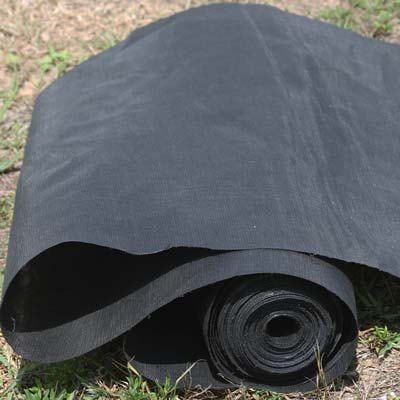When planning construction or environmental projects, understanding the differences between geotextile fabric and geomembrane liners is crucial. These two materials are essential in geotechnical engineering, but their distinct properties and applications set them apart. As a trusted supplier of geosynthetics, we’ll explore their roles, benefits, and how to choose the right one for your needs.

I.What is Geotextile Fabric?
Geotextile fabric is a versatile material made from synthetic fibers like polyester or polypropylene. It is designed to enhance the stability and functionality of soil structures. This material is permeable, allowing water or gases to pass through while filtering out soil particles. It’s widely used for:
Filtration:
Preventing soil erosion while maintaining water flow.
Reinforcement:
Improving soil strength in road construction and retaining walls.
Drainage:
Directing water away from structures to prevent damage.
Geotextile fabric comes in two main forms: woven and non-woven. Woven fabrics are strong and suitable for reinforcement, while non-woven types are ideal for filtration and drainage because of their superior permeability.
II.What is a Geomembrane Liner?
Unlike geotextile fabric, geomembrane liners are impermeable barriers made from synthetic polymers, such as HDPE (high-density polyethylene). These liners are specifically designed to prevent liquid or gas migration. Their impermeability makes them essential for containment applications, including:
Landfill lining systems.
Wastewater treatment ponds.
Reservoirs and canals.
HDPE geomembranes are particularly popular due to their durability, chemical resistance, and cost-effectiveness. As a leading manufacturer and supplier, we specialize in providing high-quality HDPE geomembrane liners tailored to meet the demands of industrial and environmental projects.
III.Key Differences Between Geotextile Fabric and Geomembrane Liners
Although both materials play vital roles in geotechnical applications, they differ in their characteristics and applications. Below, we break down the key differences:
Permeability
One major difference lies in permeability. Geotextile fabric allows water and air to pass through, making it perfect for filtration and drainage. In contrast, geomembrane liners are completely impermeable, ensuring liquids and gases remain contained.
Material Composition
Geotextile fabrics are made from woven or non-woven synthetic fibers, ensuring flexibility and durability. Geomembranes, especially HDPE liners, are composed of high-density polyethylene, which provides excellent resistance to UV rays, chemicals, and punctures.
Thickness
Geomembrane liners are thicker and more robust than geotextile fabrics, allowing them to withstand heavy mechanical loads and environmental stress. This makes them suitable for long-term containment systems, while geotextiles are typically thinner but effective in separating and reinforcing soil layers.
Functions
The functions of these materials differ significantly:
Geotextile fabric enhances soil stability, promotes drainage, and prevents erosion.
Geomembrane liners act as barriers to contain liquids, protect against seepage, and ensure environmental safety.
Applications
Both materials serve different purposes in various industries. For example:
Geotextile fabric is used in road construction, erosion control, and retaining wall systems.
Geomembrane liners are essential for landfill containment, mining operations, and agricultural water storage.
IV.When to Use Both Materials Together
In many projects, geotextile fabric and geomembrane liners work together to achieve optimal results. For instance, in landfill construction, a geomembrane liner prevents leachate from contaminating groundwater, while a layer of geotextile fabric protects the liner from punctures caused by sharp objects in the soil. This combination enhances the overall durability and functionality of the system.
V.Why Choose Us as Your Supplier?
As a leading manufacturer and supplier of both geotextile fabric and HDPE geomembrane liners, we offer products that meet the highest industry standards. Our geomembrane liners are made from premium HDPE materials, ensuring long-term reliability in containment applications. Meanwhile, our geotextile fabrics are engineered for strength, flexibility, and superior filtration.
What We Offer:
a.High-Quality Materials: Our geomembrane liners and geotextile fabrics undergo rigorous quality control to ensure they perform under demanding conditions.
b.Tailored Solutions: Whether you need materials for a landfill, a reservoir, or erosion control, we provide customized products to meet your project requirements.
c.Expert Support: Our team of experienced professionals is here to guide you through material selection, installation tips, and project planning.

VI.Conclusion
Both geotextile fabric and geomembrane liners are essential in geotechnical and environmental projects, but their differences make them suitable for distinct applications. Geotextile fabric provides filtration, reinforcement, and drainage, while geomembrane liners ensure complete containment. Together, they form a powerful combination for addressing complex engineering challenges.
By choosing us as your supplier, you gain access to top-tier materials, expert guidance, and tailored solutions. Whether you’re looking for reliable HDPE geomembrane suppliers or high-quality geotextile fabric, we’re here to support your success. Let us help you achieve sustainable and effective results for your next project!
